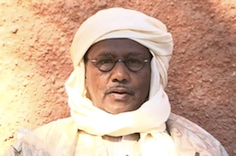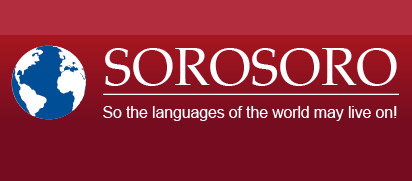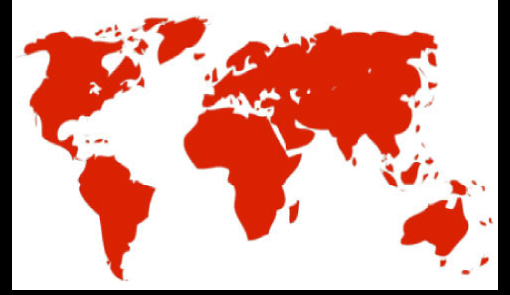Print  |
|


Videos in Tamasheq – SAHEL, NORTH AFRICA

Presentation of the Tamasheq language
Tamasheq (or Tamajeq, or Tamaheq, stemming from the word Tamazight) is the language of the Tuareg, a nomadic people that has been settled in the desert areas of North Africa for millennia, over a vast territory reaching from Mali to Libya, from Burkina Faso to Algeria, and including Niger. There are around one million speakers of Tamasheq.
As are Kabyle, Shawia, or Rifian, Tamasheq is actually a variant of Berber (or Tamazight), a group of languages found in the entire part of North Africa (Marocco, Algeria, Tunisia, Libya, Egypt, Niger, Mauritania, Mali, and Burkina Faso), not to mention a large diaspora in Europe and America. In total, estimations account for over 45 million speakers of Berber languages.
One distinctive feature of the Berber language is its writing. An alphabet known as Tifinagh appeared during the first millennium B.C., and despite its disappearing in most of the North where it was replaced by Roman and Arabic alphabets, the Tuareg have been using it ever since. In the second half of the 20th century, a modern version, first created by the Berber Academy, and then modified by linguists to reach a standard form that would be suitable to all types of idioms, is now widely used in the North, and was even formalized in Morocco in 2001. This Alphabet, known as Neo-Tifinagh, while raising enthusiasm in the North, still encounters reluctance among the Tuareg people.
Image & sound: Arnaud Contreras
Language advice: Salem Mezhoud
Editing: Caroline Laurent
Many thanks to Abdelkrim Touhami. Mohamed Hamza. Moussa Ag Keyna and Laurent Le Nevez from Toumast. Abdallah Ag Alhousseyni from Tinariwen. Mokhtar and Mohamed Zounga, Nicolas Loizillon, Badia Journet and the Akar Akar team. Mahmoud Bekkar from Syn Air. Nadia Bellalimat. Jean-Marc Durou. Fred Miguel. Zaid. Farida Sellal, Samira Clady-Farid and the Imzad Festival crew. Philippe Holvoet. Cornelis Van Voorthuizen. Benoît Auriol. Laurent de Verneuil. Grégoire Cruse. Sidiali Youlansar (Sakaï). The Ahaggar National Park team. The members of the “Sauver l’Imzad” (“Save the Imzad”) Association
Identity issues
Tamasheq language is still very much alive, with over a million speakers. But what does the future hold for this language of the desert in an ever-more urban and globalized context?
What is to become of this particular culture when more and more youngsters are choosing to leave? Why is oral language not enough,and why should focus be drawn to the teaching of writing? What would the world lose if it lost the Tamasheq language…?
Such are the questions tackled here by Moussa Ag Keyna, from the band Toumast, Abdelkrim Touhami, and Mohamed Hamza, poet and teacher, whose account might tempt one to head out for the desert and discover his people…
Image & sound: Arnaud Contreras
Editing: Caroline Laurent
Songs in Tamasheq, by Moussa Ag Keyna
The Tuareg have had their fair share of struggle for a better recognition of their rights and culture, a conflict that officially ended in Mali 1992 and Niger in 1995.
In the continuity of this struggle, several bands of Tuareg music, also known as Ishumar, were formed. The first one was Tinariwen. These bands take up traditional melodic patterns to which are often added more politically involved lyrics on their lifestyle and the call for youth mobilization.
Toumast was created in the 90s by Moussa Ag Keyna. After years of fighting and resistance, he was severely injured and evacuated to France. With Aminatou Goumar, he recorded a first album and then a second evolving around normal life, love, exile, Tuareg struggle and disillusion.
We’re introducing a few of these songs, sung solo by Moussa Ag Keyna on guitar. The first one, called « The Hawk », is about the nostalgia of life in the desert; the second one, “This girl“, is more of a love song; and the third one, “Hey Brothers!”, is a struggle song for the Tuareg to remember the fight for the recognition of their identity.
More on Toumast: Official website, Facebook, Myspace, Real World Records.
“Innulamane (The Hawk)”
“Tallyatt Idaght (This girl)”
“Kik ayittma! (Hey Brothers!)”
Image & sound: Arnaud Contreras
Translation: Moussa Ag Keyna
Editing: Caroline Laurent
Tinariwen: interview with Abdallah Ag Alhousseyni
Abdallah Ag Alhousseyni, from Tinariwen, tells us, in Tamasheq, about his relation to his language and how he got to learn Tifinagh script.
Image & sound: Arnaud Contreras
Translation: Moussa Ag Keyna
Editing: Caroline Laurent
Little words for everyday use
Moussa Ag Keyna, from the band Toumast, and Mohamed Hamza, poet and teacher, are going to try and teach you some basic words of their language!
Numbers
Colors
Days of the week
Body parts
Daily phrases
Mohamed Hamza tells us about different common words and expressions in his language; I’m hungry, I’m cold… I love you! And concludes with a few words on the great sense of modesty of his people, who prefer action to expressing their feelings.
New words
Mohamed Hamza rightly points out that, like any language confronted to the challenges of globalization, his language includes neologisms invented by the younger generation and adaptions of foreign so-called “international” common words – considering how similar they are in every language. Local taste, of course.
Image & sound : Arnaud Contreras
Language advice : Salem Mezhoud and Abdoulahi Attayoub
Editing : Caroline Laurent
Words of the desert
Mohamed Hamza tells us about the word “Tenere“. We know the word for referring to the desert of this region, but for the Tuareg it also has another meaning, which you’ll discover here…
As for the term “Sahara“, we learn that it has nothing to do with a Berber word, although the Berber people are all over this part of the continent…
Image & sound: Arnaud Contreras
Editing: Caroline Laurent








